MusicRadar Verdict
A budget-friendly electric with a dialled-in setup, fun playability and grown-up tones, the Masquerader Classic is a real charmer. If there was any justice, Shergold would be a household name. On this evidence, it might just be a matter of time.
Pros
- +
Lovely neck profile and it's roasted maple too.
- +
Lightweight and ergonomically forgiving.
- +
Versatile and credible range of tones.
- +
One for modders to enjoy.
Cons
- -
Limited finish options at present.
- -
No left-handed models.
- -
Outside edge of fingerboard needed a little sanding.
MusicRadar's got your back
What is it?
Enthusiasts of British electric guitar history will tell you that the Shergold brand has a bit of pedigree, a history that extends back to the late ‘60s, and a roll call of players including Bernard Sumner, then of Joy Division, and Mike Rutherford of Genesis, both of whom have played Masqueraders at one time or another.
But the Masquerader Standard SM11 here is a different type of Masquerader, from a very different Shergold. Indeed, you might well be forgiven for thinking of Shergold as a 21st-century brand, with 2015 its Year Zero after being acquired by Barnes & Mullin.
With a little help from one of British luthierie’s GOATs, Patrick James Eggle, Shergold has been remade anew, as have its guitars.
The Masquerader has been reworked as the Masquerader Classic, a mid-priced solid-bodied doublecut offering a variety of electric guitar pickup configurations, all from Seymour Duncan, and then most recently, in late 2024, as the Masquerader Standard, an even more affordable take on the model, with Shergold’s own brand P-90 taking care of business at the neck position, a humbucker at the bridge.
Whether it has been the circa 2017 Masquerader 1 with its JB humbucker at the bridge and SP90-1 vintage soapbar at the neck, or the HSS Masquerader 2, we’ve never met one we didn’t like.
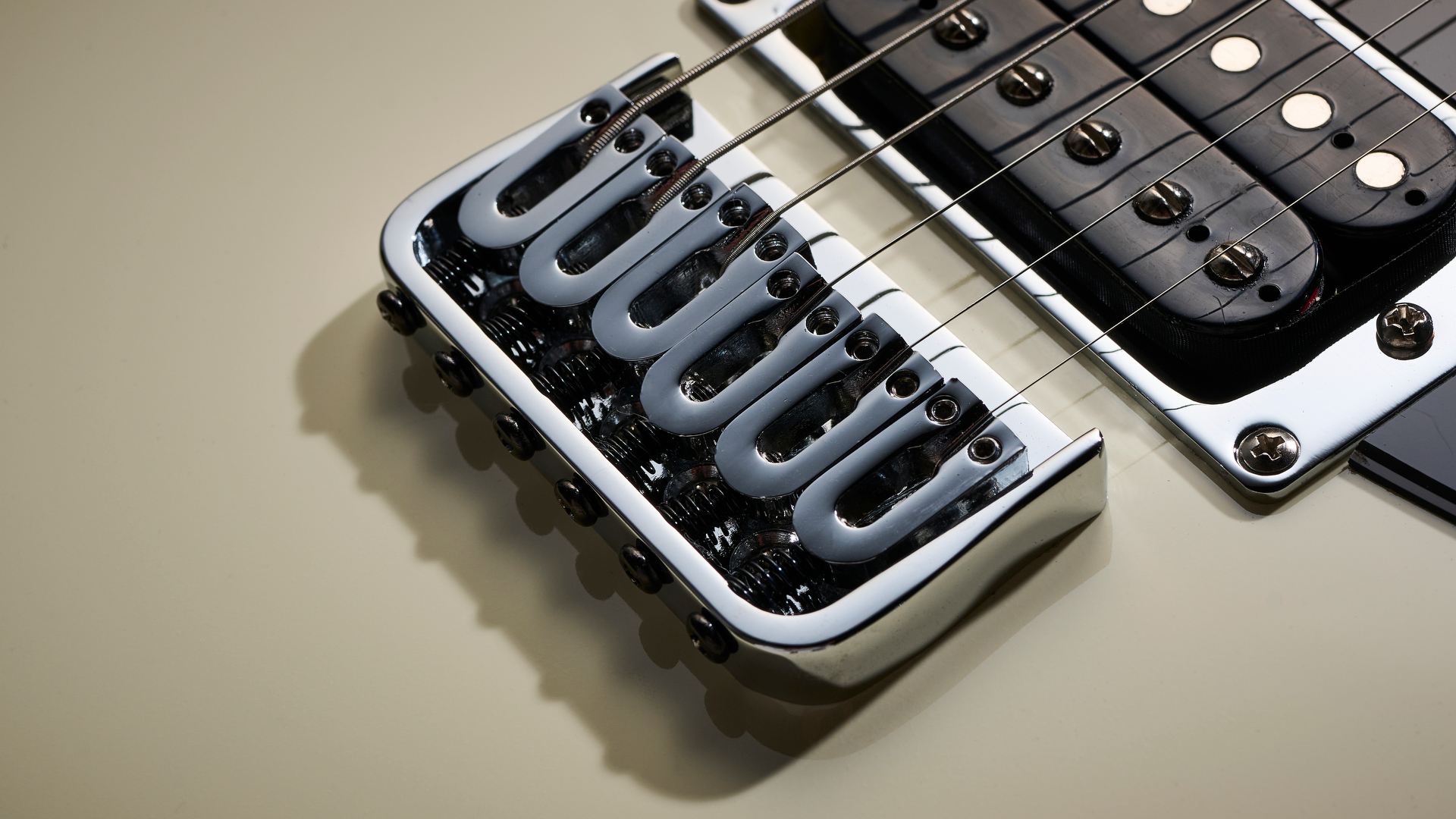
Based on an archive model yet thoroughly refreshed, a familiar shape yet not that familiar, and with a lesser-spotted humbucker/P-90 configuration, it is a difficult guitar to pigeonhole, to place on the guitar design continuum.
But maybe that is the Masquerader’s USP. Could this be the doublecut with the vintage kudos and the sounds to be a fresh alternative to the innumerable Strat-alikes on the market?
Specs

Launch price: $463/£409/€450
Made: Designed in UK, made in Indonesia/China
Type: Six-string electric guitar
Body: Poplar
Neck: Roasted Canadian maple / C profile
Fingerboard: Laurel, 12" radius, with lined fret markers
Scale length: 25.5"/305mm
Nut/width: Synthetic bone / 42.5mm
Frets: 22, medium jumbo, hard nickel
Hardware: Staggered height locking tuners with chrome buttons, 6-saddle chrome string-through-body hardtail with flush-fitting chrome ferrules
String spacing at bridge: 52mm
Electrics: P-90 (neck), humbucker (bridge), volume, tone, 3-way blade-style pickup selector
Weight: 7.4lbs / 3.36kg
Options: Masquerader Classic SM01-SD with Seymour Duncan P-90/humbucker configuration, Masquerader Classic SM01-SD with three Seymour Duncan single-coil pickups, Masquerader Classic SM02-SD HSS with Seymour Duncan pickups (all £765)
Left-handed options: No.
Finishes: Quartz White (as reviewed), Astral Blue
Cases: No. Gigbag sold separately (£97)
Contact: Shergold Guitars
Build quality
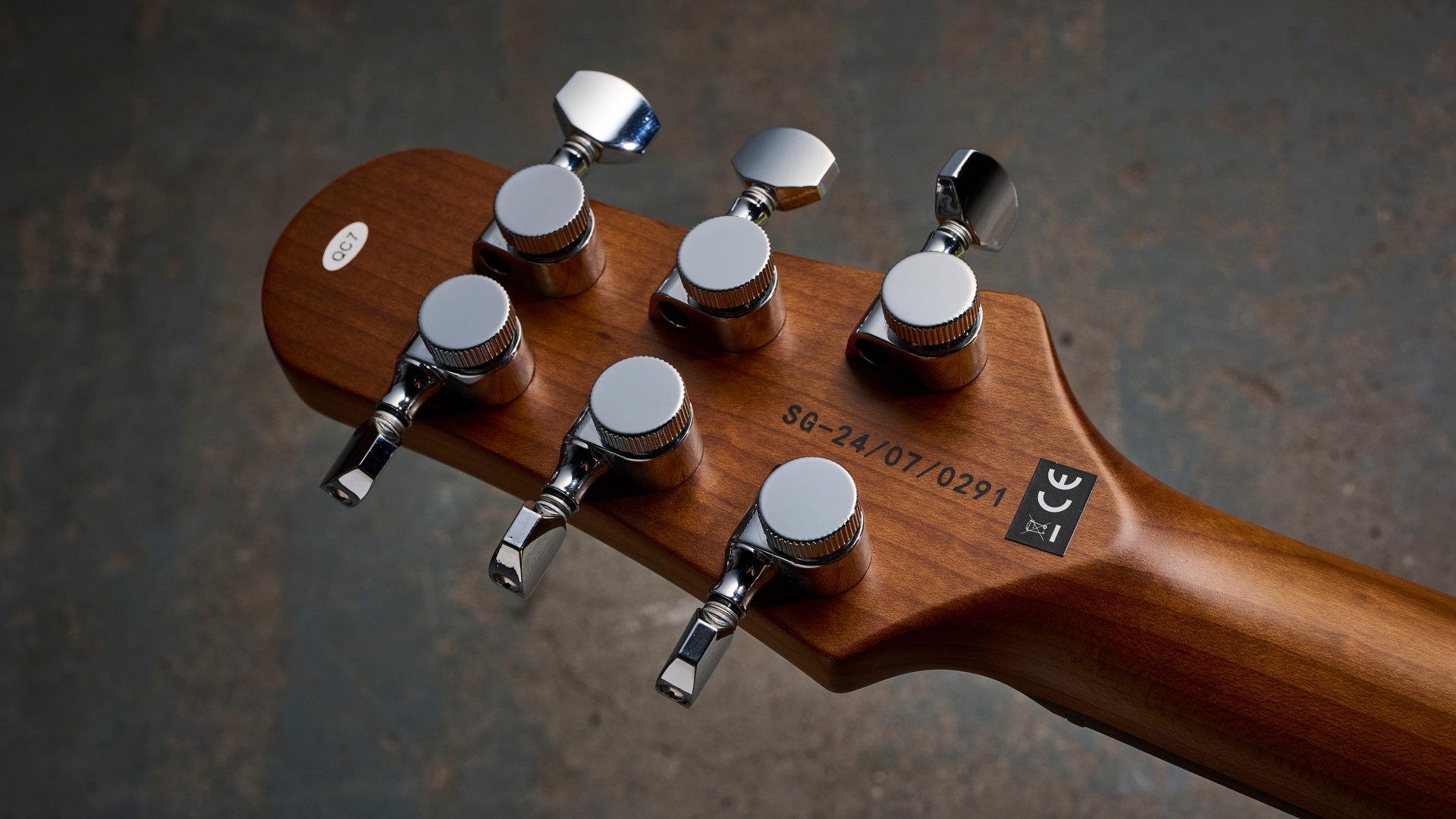
Build quality rating: ★★★★½
The Stratocaster might be an obvious design antecedent for the Masquerader body shape but there’s zero chance of anyone getting the pair mixed up. The Shergold is more conservative and cautious, with shorter and more rounded cutaways, and that makes it look a little more eccentric, particularly with that slightly asymmetrical offset waist. It’s hard to place – the look of a pawnshop foundling, the solidbody that time forgot?
The most famous Masquerader is arguably Bernard Sumner’s, which can be seen in Joy Division’s video for Transmission, and while the SM11 shares the same body shape, it is a very different guitar with a better looking headstock.
Eggle has revised the post-2017 models with a 3x3 design that’s rounded to complement the body’s curves. Again, it’s unconventional, putting yet more distance from Leo Fender’s ür-doublecut, and yet, aesthetically, it works, and that’s no mean feat.
A new headstock shape is often the hardest to get right. Eggle has been on record to say that this was indeed the case here. The locking tuners were not so much to keep the strings locked down as they were to bring the string height down for the D and G strings.
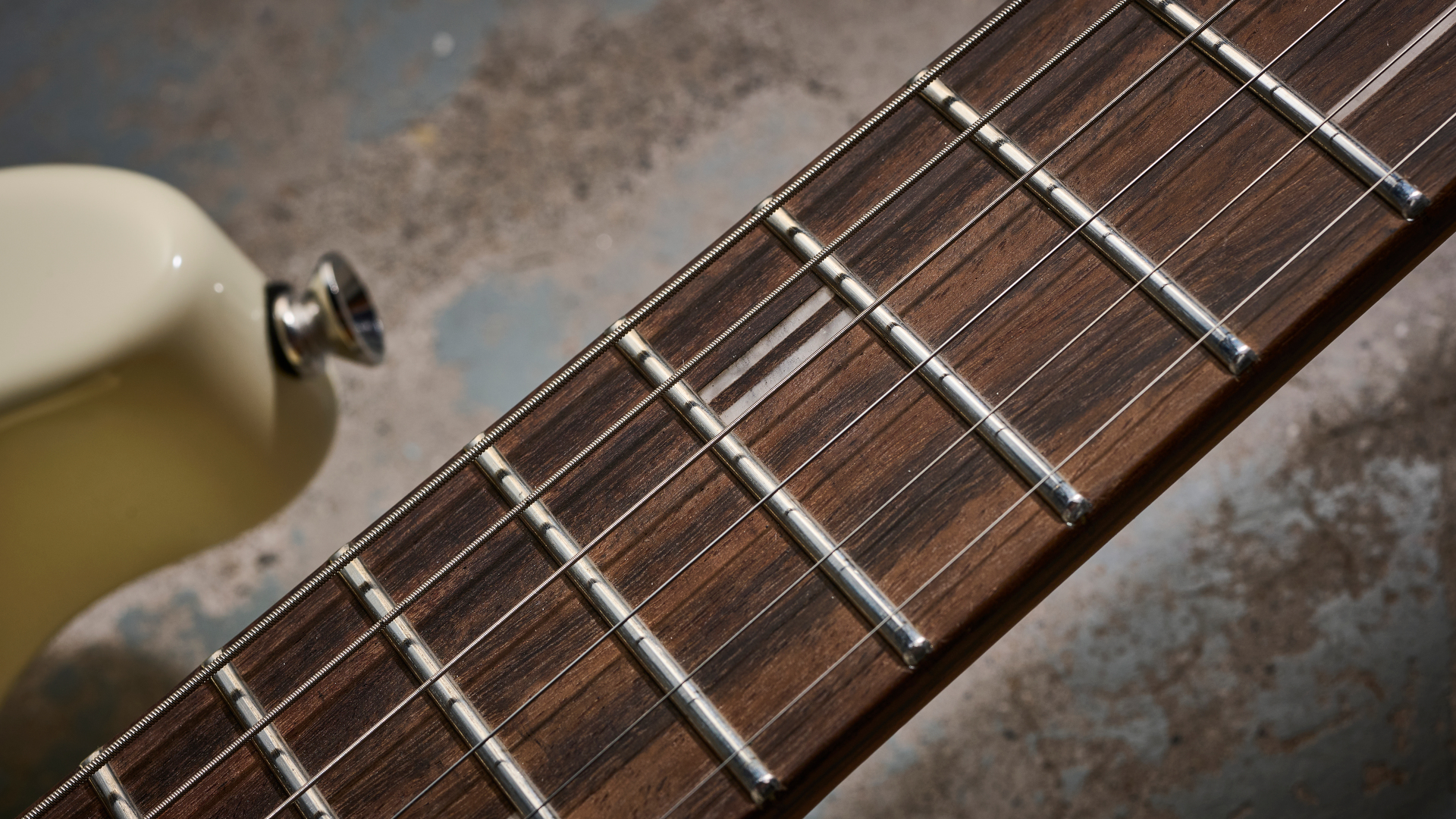
The body is solid poplar, as you might find on many of today’s Squier guitars lineup, and at many of the alternatives at this price, and it makes for an agreeably lightweight instrument that weighs in at 7.4lbs.
A deep shade of caramel, the neck is roasted Canadian maple, which will not find on many guitars at this price, and carved into a mainstream C profile with a satin finish. There are more premium touches. We have a set of locking tuners. The volume and tone dials are hooked up to 500K pots. This doesn’t feel like an electric guitar under the magic £500 mark.
There is some roughness on the outer edge of the fingerboard between the 5th and 12th fret that could have used another pass with some fine-gauge sandpaper. But otherwise the fit and finish is note perfect
The 22 hard nickel frets are flawlessly installed, and well polished, giving them that slinky feel. The laurel fingerboard is dark enough to pass for rosewood. Those lined fret markers are a nice touch.
The factory setup is spot on if you like the action low. There is some roughness on the outer edge of the fingerboard between the 5th and 12th fret that could have used another pass with some fine-gauge sandpaper. But otherwise the fit and finish is note perfect. The electronics cavity is tidy enough.
You will find an ashtray-style bridge on the Masquerader Classic, with three-brass saddles like a ‘50s era Telecaster. Here, instead, we have a six-saddle hard-tail, strung through the body. Those chrome ferrules on the back of the guitar sit recessed neatly in the body. It’s a tidy piece of hardware, and a comfortable resting place for your picking hand.
Playability

Playability rating: ★★★★½
String bends feel good. That satin neck finish feels good. This is a guitar with no sharp edges – even the body seems to melt away
Lightweight, nicely balanced on a strap or played seated, with a flattering neck profile – not skinny, but with the shoulders rolled off nicely – the Masquerader Standard is an easy ride.
The price would obviously recommend it to younger players, and those starting out, but so too would its playability. And not just because it is so amenable with its slinky feel putting some zip into your licks, but it invites players of all styles to impress their own personality on the instrument.
A player is free to develop their style on an instrument like this and that is important. You can always pick up a specialist’s six-string further down the line. The Masquerader leaves all options open.
String bends feel good. That satin neck finish feels good. This is a guitar with no sharp edges – even the body seems to melt away with an edge radius that is ergonomically forgiving.
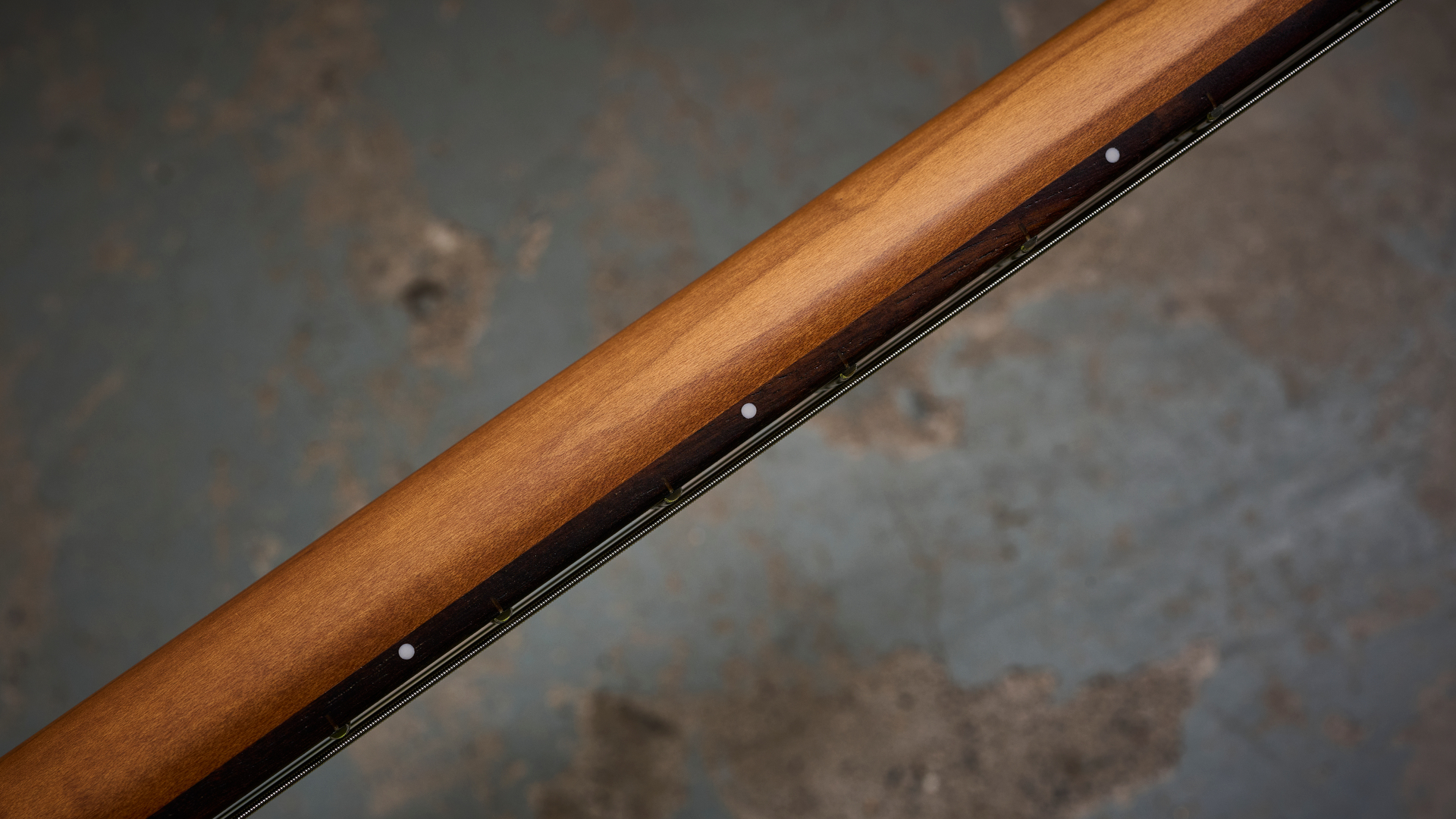
There is some timber taken out at the four-bolt joint but Shergold hasn’t gone all the way in contouring the neck heel. Maybe it doesn’t have to go that far. As it is, that lower cutaway exposes enough of the fretboard to make all 22 frets accessible.
We’ve never met a Masquerader we didn’t like – I’m glad to say this is no exception
With the 25.5” scale length and bolt-on build allied to the flatter 12” fingerboard radius that you would commonly associate with Gibson guitars, this Masquerader first called to mind Fender’s Player Plus series.
That in and of itself is a ringing endorsement. This similarly feels like a guitar that’s designed to keep you playing, comfortable for chords and rhythm work, just enough grease on the tracks for speedy leads. It is also a considerably cheaper instrument.
Give it a few minutes and, of course, it is obvious: what this SM11 really feels like is the more expensive Masqueraders in the Shergold series. This is neck shape and playing experience as brand identity, all part of Eggle’s grand plan for how this family of guitars should present themselves to guitarists.
We’ve never met a Masquerader we didn’t like. I’m glad to say this is no exception. Even the pickup selector placement makes sense, right there by the dials, close at hand yet not so close you are at risk of accidentally knocking it out of position.
Sounds

Sounds rating: ★★★★1/2
This is a more than respectable P-90 for blues guitar; dynamic, really coming to life with the amp on the edge of breakup
One of the problems of having a P-90 in situ at the neck position is tearing yourself away from it. This is no different. It has that addictive quality unique to all P-90 variants, practising its own special magic on crystal clean tube amp tunes.
With a bit of extra treble on the dial, some compression, it even has some of that bell-like clarity and spankiness you would expect from a Strat pickup. But give it more, be it from your pick and fingers or from the amp or a drive pedal, and it reveals all that extra harmonic character it has been hiding in the midrange.
Always “the third pickup” when talking tone preferences and the merits of single-coils vs humbuckers when it is and has been a single-coil all along, it remains one of electric guitar’s most compelling sounds, and arguably there is no better foil for a full-fat bridge humbucker. This is a more than respectable P-90 for blues guitar; dynamic, really coming to life with the amp on the edge of breakup.
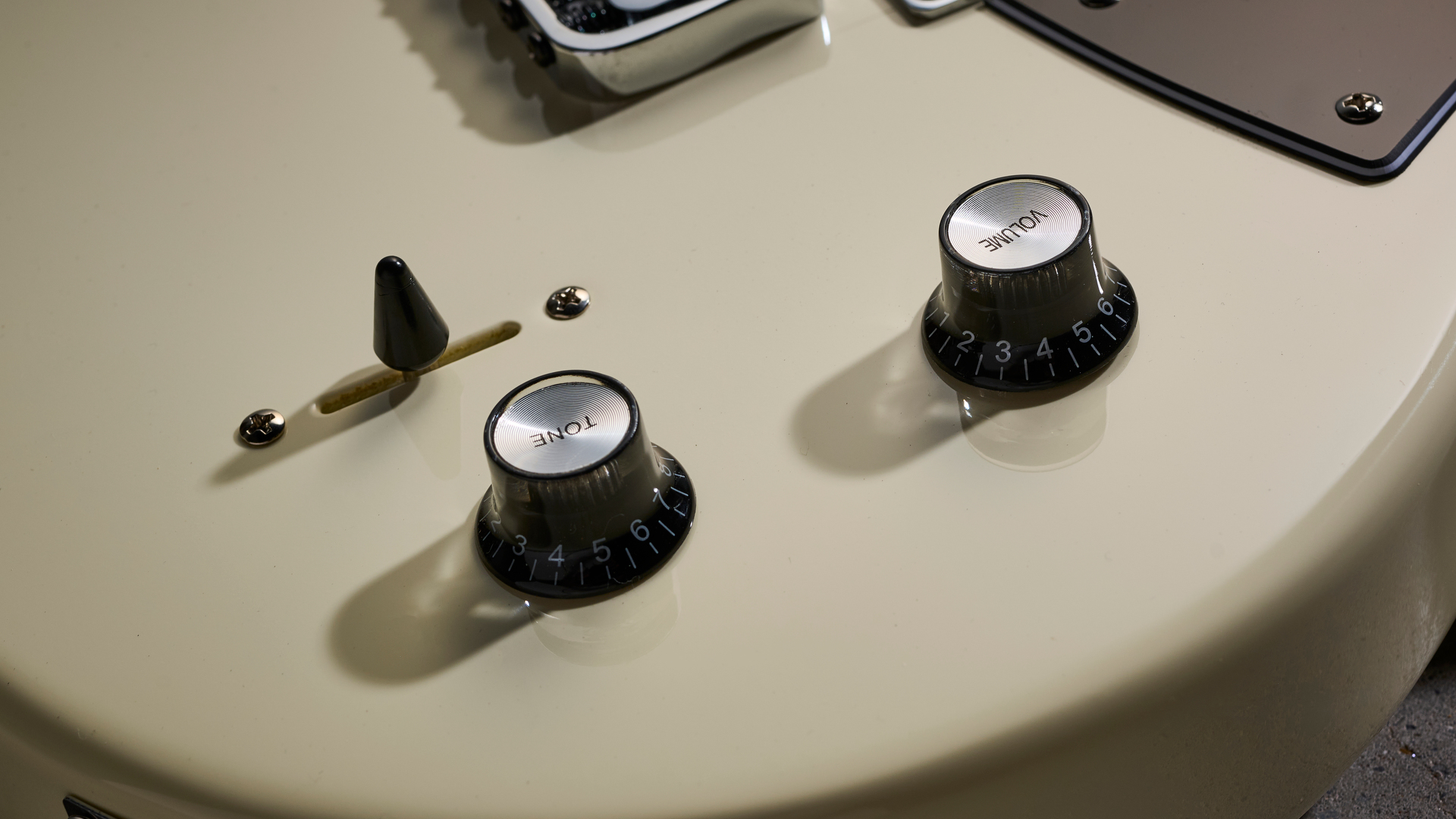
And, of course, P-90s love gain. Turning up the heat with the drive circuit on a JHS Pulp N’ Peel compressor pedal engaged and it’s rock ’n’ roll dynamite. It is a good pickup at this price – at any price – but the 500K pots make a huge difference.
The action on these tone pots is perfectly calibrated – again, they feel like they belong on a more expensive guitar
They wring every bit of goodness out of it. Rolling back the tone with the drive on yields Clapton’s “woman tone,” and jack up the drive further and it’s wild and woofy, and on those aforementioned crystal clean tones it’s fun for warm and wooly jazz comping, a little nasal but precise.
The action on these tone pots is perfectly calibrated. Again, they feel like they belong on a more expensive guitar, and they work just as well with the humbucker. Those who might have preferred a humbucking pickup at the neck position can simply roll back the tone. It works a treat, and offers another very useful tone.
Okay, this bridge humbucker is no match for the Seymour Duncan JB that you will find on the Masquerader Classic, but c’mon, few pickups are, and it nonetheless delivers big fun with high-volume rock tones and doesn’t lack for trebly bite, delivering a sting when you hit a note hard and bend it.
The mix position should not be discounted either. It is a raucous affair with the fuzz pedal on, and taming it with some volume knob roll-off, it is an inspiring platform for rhythm-lead blues-rock playing in the style of Hendrix, SRV et al, with lots of magical overtones that give triads and double-stops colour and character.
Verdict
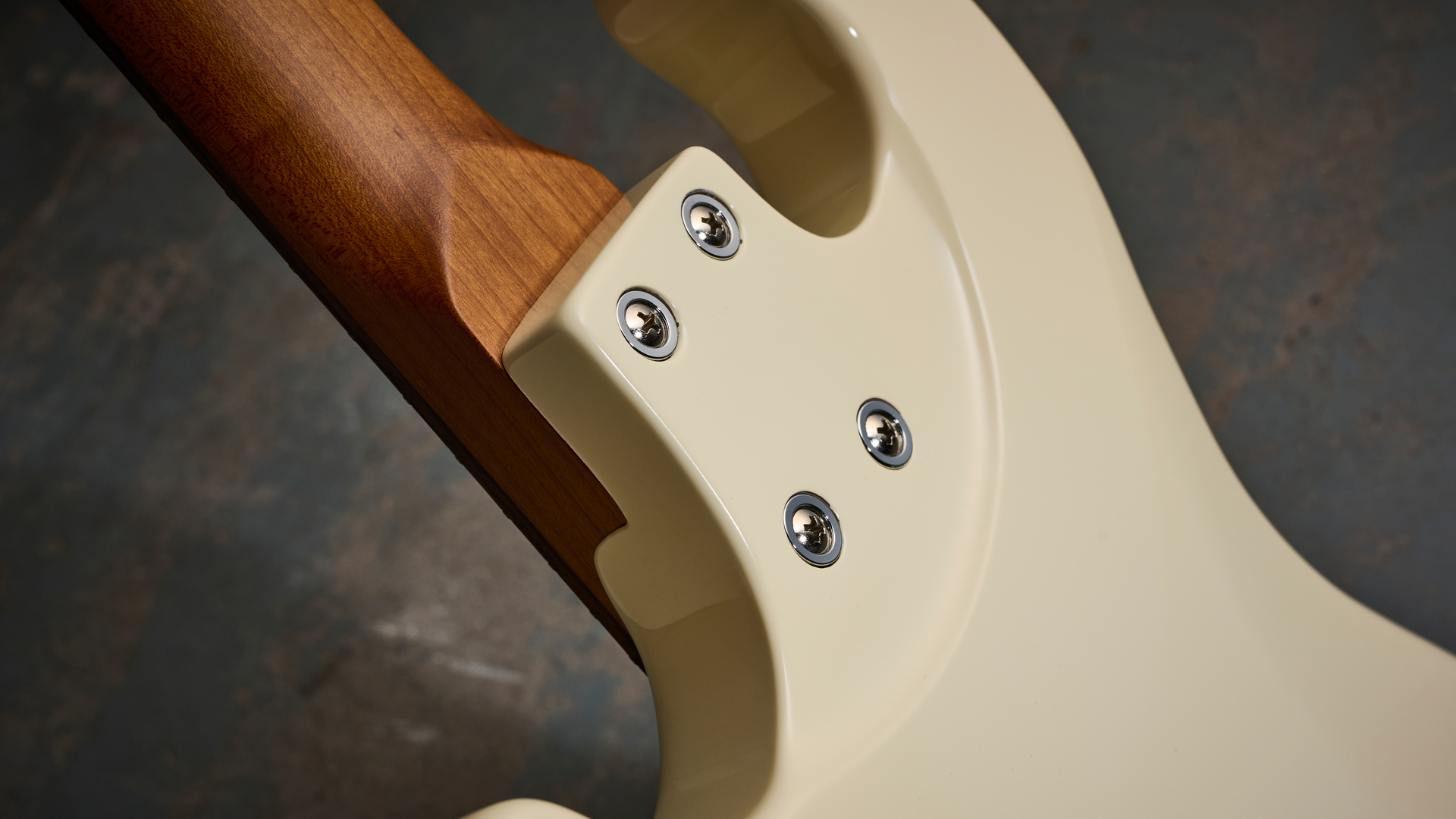
How long will Shergold be one of the unknown pleasures of electric guitar if it carries on making guitars as good as this? All the brand needs in its resurrected state is a high-profile endorsee, an artist to show the people what they’re missing. As it is, let’s call it a cult classic. It'll be our secret.
Further down the line you could stick a set of Seymour Duncans in this and it really would be a seriously gig-worthy electric with a good weight
As a beginner’s first decent electric, it is a serious option in a hotly contested market, where the likes of Squier and Epiphone are doing a lot of good work.
It would also make a superb candidate for modding. You would not even have to upgrade the wiring. Further down the line you could stick a set of Seymour Duncans in this and it really would be a seriously gig-worthy electric with a good weight.
Maybe you arrived here because of Shergold’s Joy Division connection, or because Patrick James Eggle designed it. Or maybe it was the luck of the algorithm. But whatever flavour of kismet has alerted you to this guitar you should be grateful and seize the opportunity to try one at the first available opportunity.
MusicRadar verdict: A budget-friendly electric with a dialled-in setup, fun playability and grown-up tones, the Masquerader Classic is a real charmer. If there was any justice, Shergold would be a household name. On this evidence, it might just be a matter of time.
| Test | Results | Score |
|---|---|---|
| Build quality | Superb factory setup, very respectable build and spec for the price. | ★★★★1/2 |
| Playability | It's well-balanced and that satin-smooth neck has a crowd-pleasing profile. | ★★★★1/2 |
| Sounds | The 500K pots help get the most out of a superlative pickup pairing that can cover rock, pop, jazz, blues, indie. It's a tone machine. | ★★★★1/2 |
| Overall | The Masquerader Standard has to be one of the best options at this price point if you're looking for an super-versatile double-cut with a classic style. | ★★★★1/2 |
Also try
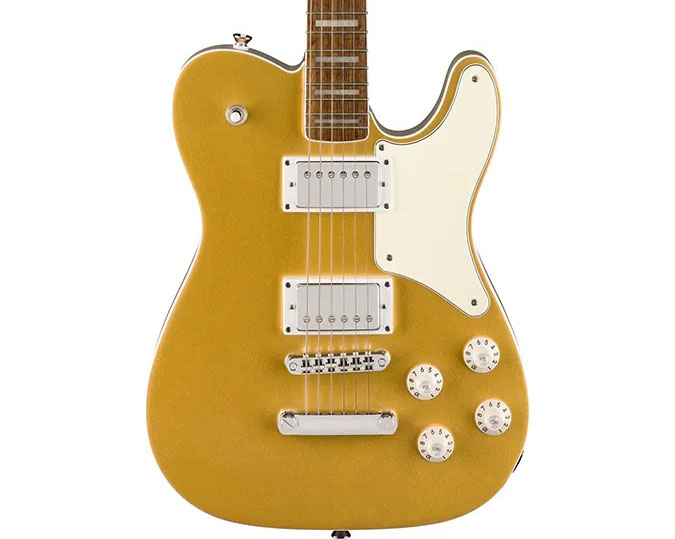
$449/£439/€509
The Paranormal series is Squier putting crazy and inspired twists on established Fender designs, and this dual-humbucker Tele with coil-splitting is one of the coolest they've ever done.
Read more: Squier Paranormal series Telecaster Deluxe review
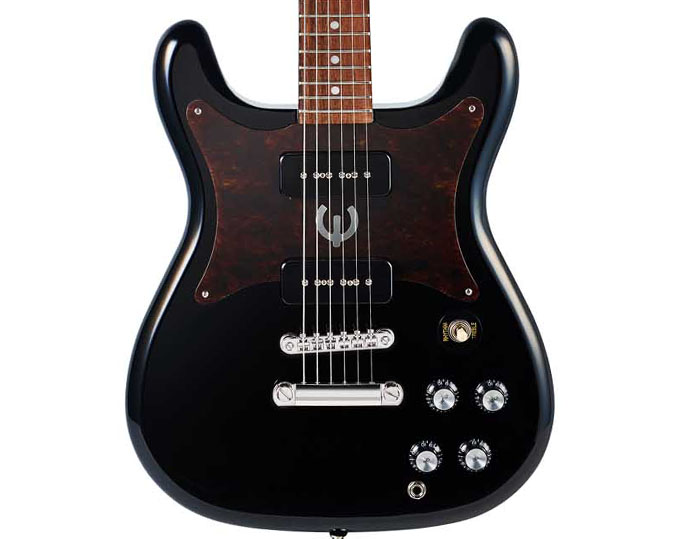
$449/£399/€474
A retro-electric from the Epiphone archive that doubles up on the P-90 mojo and is exceptional value.
Read more: Epiphone Wilshire review
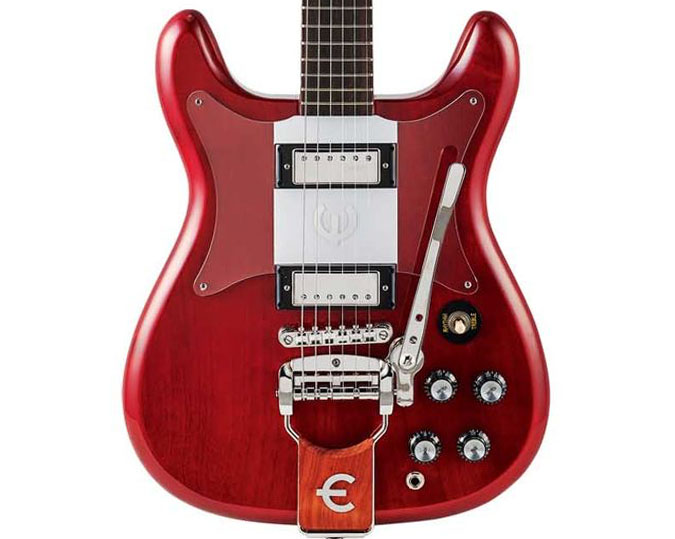
$549/£489/€502
Okay, another Epiphone, but with two mini humbuckers and a Tremotone vibrato this is vintage-inspired gold.
Read more: Epiphone Crestwood Custom review
Hands-on videos
Shergold
Jonathan Horsley has been writing about guitars and guitar culture since 2005, playing them since 1990, and regularly contributes to MusicRadar, Total Guitar and Guitar World. He uses Jazz III nylon picks, 10s during the week, 9s at the weekend, and shamefully still struggles with rhythm figure one of Van Halen’s Panama.
“Chinese Democracy was a boring record. But calling it Guns N' Roses was not honest. It was totally a solo record”: GN’R’s ex manager takes aim at Axl Rose
“Instead of labouring over a perfect recreation, we decided to make an expanded counterpart”: Chase Bliss teams up with Mike Piera for Analog Man collab based on the legendary King Of Tone
“It’s about delivering the most in-demand mods straight from the factory”: Fender hot-rods itself as the Player II Modified Series rolls out the upgrades – and it got IDLES to demo them
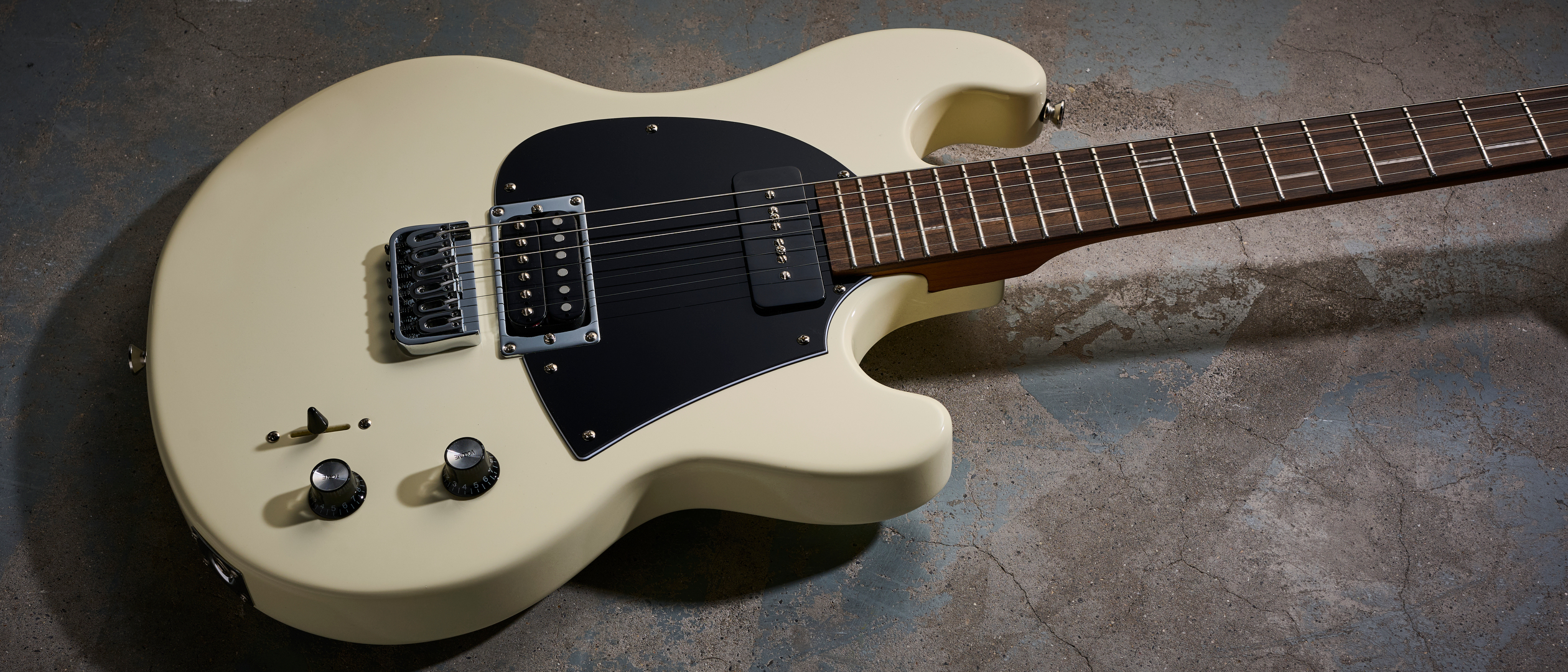
![Joy Division - Transmission [OFFICIAL MUSIC VIDEO] - YouTube](https://img.youtube.com/vi/6dBt3mJtgJc/maxresdefault.jpg)












